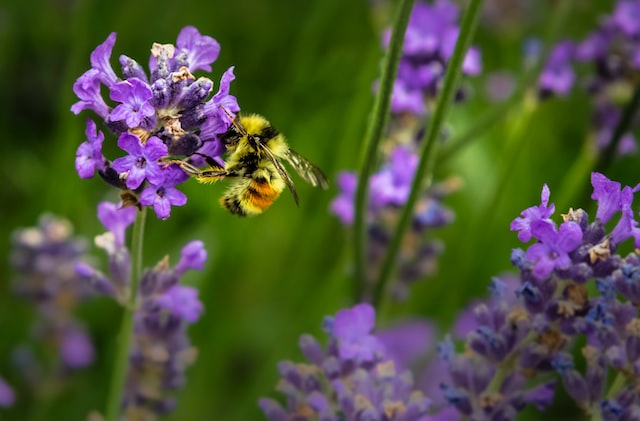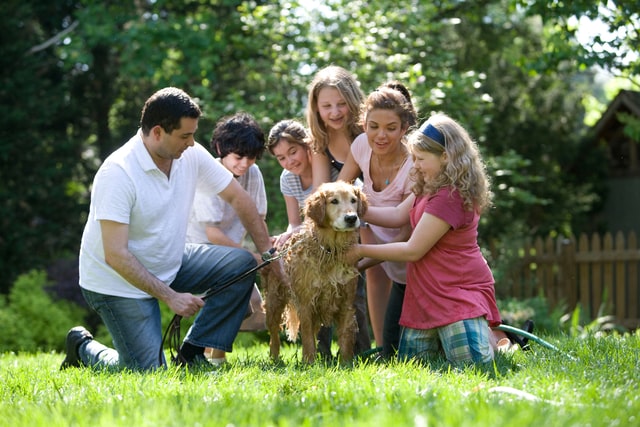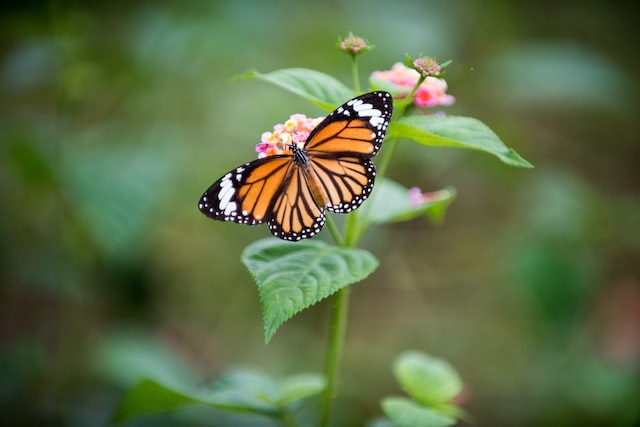Pollinators are animals that transport pollen from one plant to another. Our entire ecosystem relies on this natural process to fertilize flowers and other crucial plant life. In North America, bees are considered the most well-known pollinator, but their numbers are dwindling. There are other unique pollinators throughout the continent, including bats, which are greatly beneficial for pollination and keeping insect species like mosquitos down. Beetles and flies are also pollinators, as are many species of butterflies. North America has over 70 butterfly species, and their survival is crucial to the planet.
But one of the most beloved pollinators is the colorful hummingbird, which feeds on the nectar of plants and flowers. Its long, thin beak carries the pollen to other plants, encouraging healthy growth worldwide as they migrate from north to south. Parasitic wasps are yet another important pollinator that collects pollen and nectar, and they consume a range of insects that are considered pests to a variety of plant life.
If you’re wondering how to help bees and other pollinators thrive and survive, read on to discover tips that allow your local pollinators to flourish.
Why are pollinators so important for nature?
There are many reasons why pollinators are vital to nature’s survival. Here are a few facts about these important animals and insects.
- One-third of all agricultural output in the United States relies on pollination.
- Pollinators encourage the healthy production of flowers, food, medicine, and edible oils.
- There’s a strong correlation between plant diversity and pollinator diversity.
- Certain crops, including cherries, apples, and blueberries, rely on honeybee pollination.
- Farmers notice healthy crops and higher yields when the pollinator population thrives.
- Without pollinators, many plant and flower species would not survive.
Benefits of having pollinators around you
You may think pollinators like bees, bats, or hummingbirds are only important for plant life, but these unique creatures play a vital role in human survival, too. Without them, around 35% of the world’s edible crops would die — including 87 of the world’s most common crops — leading to famine and starvation. Not only that, but pollinators also help to produce more flavorful and nutritious foods. Over half of the world’s fats and oils come from plants that depend on pollinators, including olive oil, sunflower oil, and canola oil, to name a few.
In the U.S., we rely on over 150 food crops that depend on pollinators. One estimate from the USDA found that crops depending on pollinators are worth over $10 billion yearly.
What type of pollinators could you attract to your backyard?
If you want to attract pollinators to your backyard, add native flowers and other native plants to your garden. Here are a few pollinators and the plants you can grow that’ll bring them to your yard…
- Butterflies: Numerous types of butterflies may swarm to various plants, including milkweed, coneflower, goldenrod, and aster. Check out which plants will grow and thrive in your zone because different plants will attract different species.
- Bees: Plant native flowers with shallow blossoms like zinnias, daisies, and Queen Anne’s lace to attract the most bees. Long-tongued bees love salvia, mint, and oregano.
- Hummingbirds: When attracting hummingbirds, the brighter the flower, the better. Include perennials like columbine, daylilies, lupine, and bee balm. Hummingbirds also love annuals like petunias, impatiens, and cleomes.
- Bats: Bats are nocturnal creatures who rely on small insects to survive. Plant night-blooming flowers to attract these insects and bring more bats to your backyard. You can plant dahlia, French marigold, evening primrose, and honeysuckle.
What to know about the status of pollinators
Sadly, many species of pollinators are shrinking. This is due to several reasons, mainly human development and habitat destruction, deforestation, disease, changes in climate patterns, and the overuse of pesticides and other chemicals. While scientists are attempting to monitor the status of pollinators, it’s difficult to get specific data. We know that the number of bees is shrinking and that the beautiful monarch butterfly was recently placed on the endangered species list.
Ways to help pollinators from your backyard
Fortunately, there are a few simple things you can do to help pollinators from your own backyard. Grow native plants, use hummingbird feeders to attract hummingbirds, and more your yard less often. With a little time and effort, your backyard can become a safe haven for local pollinators and give them the boost they need to thrive and come back year after year.
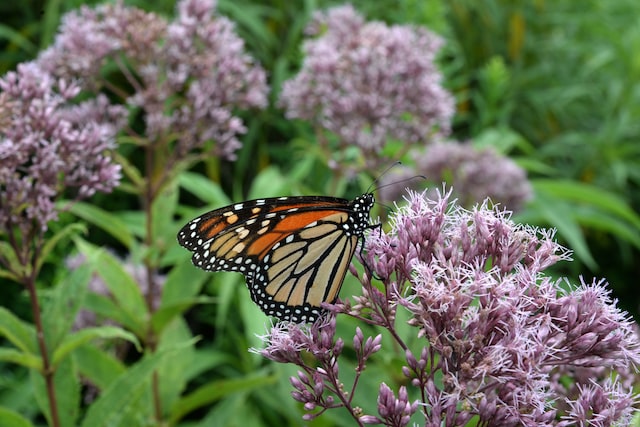
Plant Native Plants
Planting native flowers and plants based on your region will bring specific pollinator species to you. Be sure to do some research to determine which type of pollinators need the most help in your area, then plant according to your zone and region to watch them flock to your outdoor space. Try to have at least one blooming species by the early season, mid-season, and late season so you could help out pollinators.
Midwest
The Midwest region of the United States sees a diverse range of bee, moth, and butterfly species. The famous bumblebee is a common pollinator in this region. To help these crucial insects, plant wild geranium, field thistle, yellow giant hyssop, and prairie willow. Make sure you plant them according to the right season so that the plants and pollinators will thrive.
Northeast
To attract honeybees and other pollinators in this region, plant elderberry, willow, raspberry, and ornamental plants with colorful blooms. Other plants to include are common milkweed, wild indigo, black-eyed Susan, and purple coneflower.
South
In the South, you’ll find a wide range of bee species, butterflies, and hummingbirds during early spring into mid-summer. Plant a diverse, colorful variety of native flowers, including zinnia, cosmos, and marigold, to attract pollinators to your backyard in this region.
West Coast
On the West Coast of the United States, there are many pollinators, including wasps, bees, moths, butterflies, and many species of beetles. Plant native milkweeds to attract the monarch butterfly. Other beneficial plants include bee balm, butterfly bush, calendula, echinacea, foxglove, and sunflowers.
Intermountain West
To help out pollinators in this region, you could plant Western yarrow, a Yellow bee flower, or a Few flower pea that blooms in the spring. For the summer you could choose to plant sunflowers, Hoary Tansyaster, Palmer’s penstemon, or Sulphur buckwheat, and for the late summer, Yucca, Hoary Tansy aster, or Winterfat.
Planting a flower garden
When planting a flower garden for pollinators, use native flowers and plants that produce more pollen. The more diverse your garden, the wider your variety of pollinators will be. Here are some tips to help you plant a beautiful pollinator-friendly flower garden:
- Plant colorful flowers and plan your garden to rotate plants that thrive all year round.
- Make sure your plants are in areas of your yard that get the most sun to encourage healthy growth.
- Never use weed killers or pesticides, which can harm and kill pollinators.
- Research pollinators in your region and find out which plants you can include that will attract them to your home.
- Keep small piles of twigs and loose leaves throughout the garden to give pollinators a safe place to nest.
No Mow May: remember this phrase year-round
The “No Mow May” movement started in the UK, but it’s now gaining traction in the United States. The idea of this movement is to leave your grass and lawn unmown for the month of May, which will help to create a safe habitat for early-season pollinators. Participating in No Mow May will give these pollinators a healthy head starts on the season. Mowing your lawn too early can kill important flowers that pollinators rely on. You can practice this concept year-round, too. Simply mow your lawn every three weeks instead of weekly to leave flowers on your property for longer.
Don’t mow dandelions
People often feel dandelions are weeds, and all weeds should be eliminated. But it’s important to remember that a weed is only a plant out of place; choosing not to mow down dandelions or other plants that are pollinator-friendly is about seeing the importance of nature’s diversity. This makes a dandelion, not a weed, but a valued plant and plants are the foundation to healthy ecosystems in which pollinators will thrive, along with the remainder of plant and animal species, as well as people.
For people who need to mow but want to support plant diversity, it’s important to consider the region you live in, and the type of grass you have, so you can find a balance for when and how to mow, it may even be appropriate just to set aside a small section of the yard for a little wilder growth. In communities, it’s important to promote pollinators by encouraging pollinator gardens, bee lawns, and reduced mowing along roadsides and fields, interstate medians, and other green spaces. Year-round support of pollinator-friendly plants in a variety of places will make the biggest impact on increasing populations of pollinators. But don’t dismiss the simple idea of not mowing dandelions; it will provide food for bees, especially during the early spring when a few flowers are blooming, and we need our bees. For more information on plants and pollinators, visit gardenswithwings.com
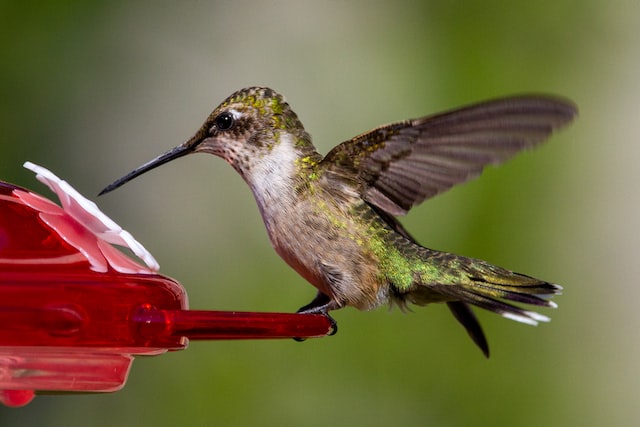
Garden décor for pollinators
Aside from tending to your landscaping with native plants and flowers, you can also add some garden décor to help pollinators thrive. These items add a charming look to your yard and provide a safe space for various species to nest and rest.
Birdhouse
Birdhouses provide a variety of birds with a safe place to nest, sleep, and stay protected from the elements and dangerous predators. Find out which birds live in your area, then add a few birdhouses throughout your lawn to give them safe shelter.
Bee houses
Bee houses have a unique design that protects solitary bees, such as the mason and leafcutter species. These little houses offer shelter and encourage more of these crucial pollinators to live in your backyard. Since bees can’t dig a hole for their nest, offering them a safe space to live will keep more of them around to pollinate your plants.
Hummingbird feeders
Although hummingbirds love the nectar of plants, they also enjoy the nectar in hummingbird feeders. Make your own mixture using a formula of one part cane sugar to four parts water. Cane sugar is best, but take care to avoid artificial sweeteners and artificial dyes, which could harm the hummingbirds. Store any remaining nectar in the fridge until you need to refill the feeder.
Go easy on the chemicals
The use of pesticides and other chemicals is one of the leading causes of pollinator population decline. Avoid using chemicals in your yard at all costs, and try to reduce weeds or pests using natural methods, so they don’t harm the pollinators. Look for homemade recipes or try eco-friendly alternatives to keep birds and beneficial insects safe.
Remove home hazards
There are also things you can do to protect pollinators. Removing various hazards will keep them safe and help them thrive.
Window protection for birds
You can apply specially designed stickers to your windows to help birds avoid running into the glass. You can also add mesh netting on the exterior of your windows. Make sure you choose small mesh netting of around 5/8” so the birds don’t get tangled.
Clean up water fountains and birdbaths
Keep all outdoor fountains and birdbaths clean and free from mold or algae. Use vinegar to clean them since regular soap can strip the birds’ wings of important oils. Fill the fountains and birdbaths with fresh, clean water every day or every other day.
Clean up hummingbird feeders
Hummingbird feeders should be cleaned thoroughly between refills. Dispose of leftover nectar, take the feeder apart, then clean it with a solution of soap and hot water. Scrub any mold or buildup, then rinse it with cold water before refilling it.
Know how to feed pollinators
Native flowers are the most natural way to feed pollinators. You can also supplement this with bird seed for birds and hummingbird nectar for hummingbirds. Put plants in groups close together, which will help attract pollinators’ attention.
Leave water out for them
Even bees need to drink water to survive. Fill a shallow dish with clean water and place rocks in the bottom so the bees won’t fall in and drown. Hummingbirds prefer to drink water droplets, so you can turn on a sprinkler and allow the water to disperse at the lowest setting. Adding bird baths or a shallow pond are two more excellent water sources for all types of pollinators and other animals.
How to take care of traveling bees
If you see a swarm of honeybees in your backyard, don’t panic. Most swarms are just resting until they migrate to a permanent hive. Educate others about the benefits of bees and what they should do if they encounter traveling bees on their property so they don’t harm them with pesticides.
Be a good steward of the environment
Perhaps one of the best ways you can protect and help pollinators is to live a more eco-conscious lifestyle. Look for ways to reduce your carbon footprint, stop using pesticides, and learn more about local plants and pollinators. The more you know, the more you’ll be able to help yourself, and the people around you learn just how important these creatures are to our world.

If you remember the popular film “Bee Movie,” you already know how much of an impact human activity can have on pollinators. Follow these tips to help pollinators of all kinds to thrive and flourish. Remember, without pollinators, life as we know it would not exist. That’s why promoting a healthy environment for these crucial birds and insects is vital to preserving our world for future generations.
